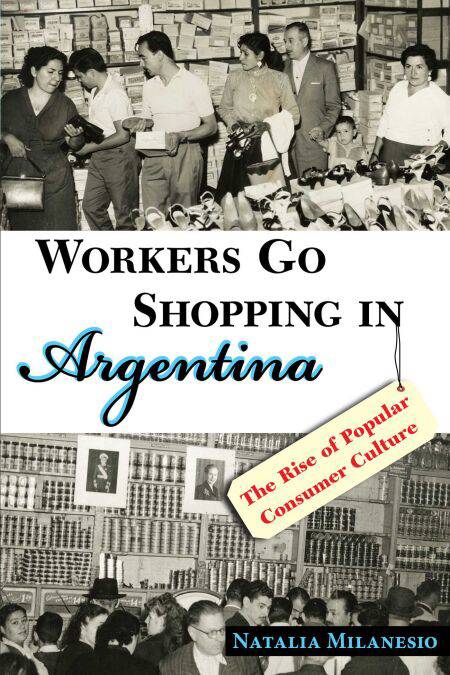
- Afhalen na 1 uur in een winkel met voorraad
- Gratis thuislevering in België vanaf € 30
- Ruim aanbod met 7 miljoen producten
- Afhalen na 1 uur in een winkel met voorraad
- Gratis thuislevering in België vanaf € 30
- Ruim aanbod met 7 miljoen producten
Zoeken
Workers Go Shopping in Argentina E-BOOK
The Rise of Popular Consumer Culture
Natalia Milanesio
E-book | Engels
€ 22,36
+ 22 punten
Uitvoering
Omschrijving
In 1951 an Argentine newspaper announced that the standard of living of workers in Argentina was “the highest in the world.” More than half a century later, Argentines still look back to the mid-twentieth century as the “golden years of Peronism,” a time when working people, who had struggled to make ends meet a few years earlier, could now buy ready-made clothing, radios, and even big-ticket items like refrigerators. Milanesio explores this period marked by populist politics, industrialization, and a fairer distribution of the national income by analyzing the relations among consumers, consumer goods, manufacturers, advertising agents, and Juan Domingo Perón’s government (1946–1955).
Combining theories from the anthropology of consumption, cultural studies, and gender studies with the methodologies of social, cultural, and oral histories, Milanesio shows the exceptional cultural and social visibility of low-income consumers in postwar Argentina along with their unprecedented economic and political influence. Her study reveals the scope of the remarkable transformations fueled by the new market by examining the language and aesthetics of advertisement, the rise of middle- and upper-class anxieties, and the profound changes in gender expectations.
Combining theories from the anthropology of consumption, cultural studies, and gender studies with the methodologies of social, cultural, and oral histories, Milanesio shows the exceptional cultural and social visibility of low-income consumers in postwar Argentina along with their unprecedented economic and political influence. Her study reveals the scope of the remarkable transformations fueled by the new market by examining the language and aesthetics of advertisement, the rise of middle- and upper-class anxieties, and the profound changes in gender expectations.
Specificaties
Betrokkenen
- Auteur(s):
- Uitgeverij:
Inhoud
- Aantal bladzijden:
- 320
- Taal:
- Engels
Eigenschappen
- Productcode (EAN):
- 9780826352439
- Verschijningsdatum:
- 28/02/2013
- Uitvoering:
- E-book
- Beveiligd met:
- Adobe DRM
- Formaat:
- ePub

Alleen bij Standaard Boekhandel
+ 22 punten op je klantenkaart van Standaard Boekhandel
Beoordelingen
We publiceren alleen reviews die voldoen aan de voorwaarden voor reviews. Bekijk onze voorwaarden voor reviews.








